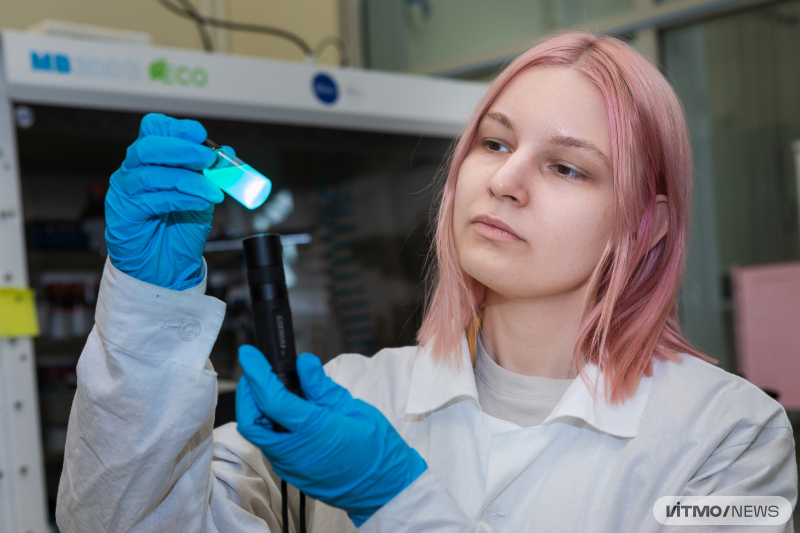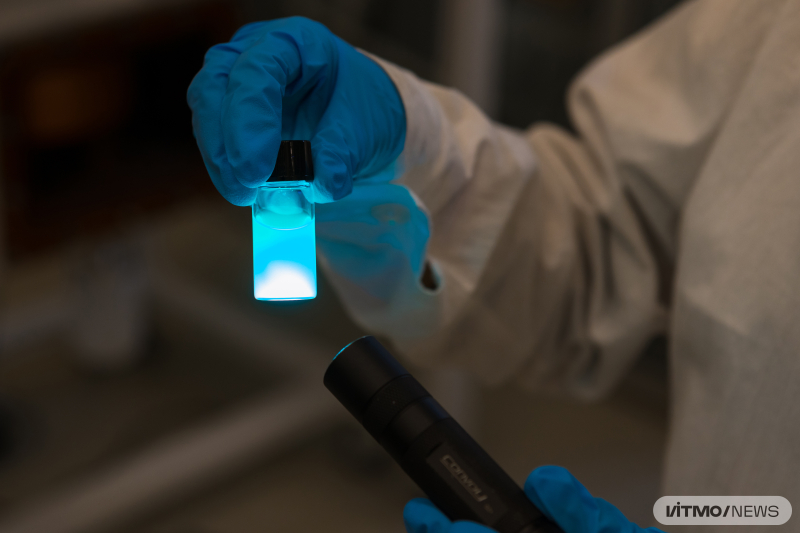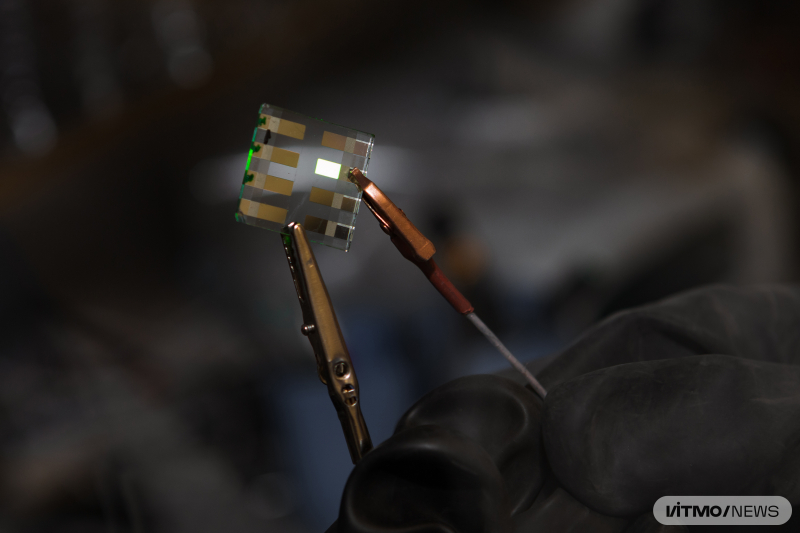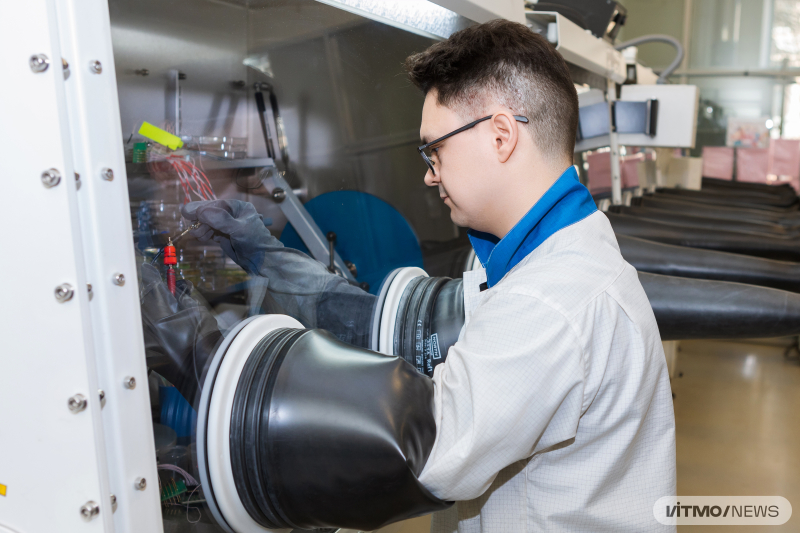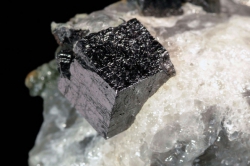Halide perovskites are semiconductor materials capable of conducting electric currents and in this way emitting light. By changing the composition of halides (namely, chlorine, bromine, and iodine) in a perovskite, it is possible to change the color of the light they emit in the visible range – for example, turn it green, red, or blue. This capacity makes it possible to use perovskites to create RGB displays for TVs and smartphones, as well as devices like grow lamps. Thanks to the properties of these materials, the devices that use them demonstrate better color rendering and energy efficiency, while also being cheaper to produce in comparison to their counterparts.
Red- and green-emitting diodes have already reached the efficiency properties necessary for production: they can function for up to several thousand hours and lose no more than 50% of their emitted light intensity over time. Blue-emitting diodes, on the other hand, are less stable: in a couple of weeks, their light turns green.
“Green and red diodes are produced from homohalide perovskites, whereas for the production of blue ones different halides have to be mixed, which complicates the process. Moreover, when exposed to an electric field, a mixed-halide perovskite undergoes ion segregation: different halide ions within the field move at different velocities and end up being unevenly distributed in the emitting layer. This disruption of the crystal structure of bromine-chlorine perovskites changes their optical properties – that’s why blue diodes turn into green ones. We were able to suppress this effect and make the emission of blue diodes more stable over time,” explains Anatoly Pushkarev, the head of the project and a senior researcher at ITMO’s Faculty of Physics.
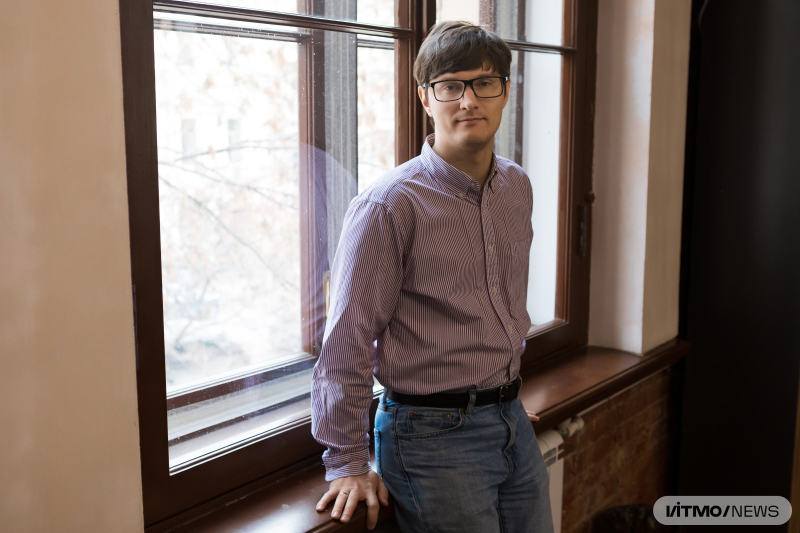
Anatoly Pushkarev. Photo by Dmitry Grigoryev / ITMO.NEWS
In collaboration with researchers from St. Petersburg Academic University and Beijing Institute of Technology, ITMO university physicists have suggested a new way for acquiring blue-emitting perovskite nanocrystals. Instead of the bromine-chlorine composition, to make nanocrystals the team used a homogenous bromine perovskite with cadmium ions introduced at a later stage. Thanks to this, they were able to prevent the development of defects affecting the color of emitted light in the perovskite’s crystal lattice. As shown in experiments, bromide nanocrystals can preserve their color for over two months.
“First, we synthesized cesium lead bromide perovskite nanocrystals based on one halide. This material emitted green light with the wavelength of 517 nanometers. In order to shorten the length to 485 nanometers and thus change the color of emitted light to blue, we used the hot-injection method: we heated the solution of perovskite nanocrystals up to 150°C and added a reactive compound of cadmium. In an hour, the cadmium molecules reacted with the surface of nanocrystals, while cadmium ions spread deep from the surface, partly replacing lead ions in the crystals,” comments Elizaveta Sapozhnikova, an engineer at ITMO’s Faculty of Physics and one of the paper’s authors.
With the suggested method, it is possible to create longer-lasting blue-emitting perovskite diodes of various shapes and forms – circles, squares, star-shapes, as well as change the hue of light to different shades of blue. In the future, the solution can come in handy for the development of brighter and more saturated RGB displays, indicator panels, and lighting gadgets, such as string lights or grow lamps used for plants.
“Our blue diode emits 100-150 candelas per square meter, which is the brightness of a smartphone screen. We are planning to keep increasing its brightness and operating time. In order to achieve this, we will need to improve not only the structure of the perovskite’s emitting layer, but also the architecture of the entire device. For instance, we could increase the number of functional layers, create nanocrystals with a core-shell structure, or replace lead ions with ions of other elements, such as zinc,” concludes Sergey Anoshkin, a junior researcher at ITMO’s Faculty of Physics and the paper’s first author.
This project is supported by the Russian Science Foundation (project No.23-72-00031) and the program Priority 2030.

